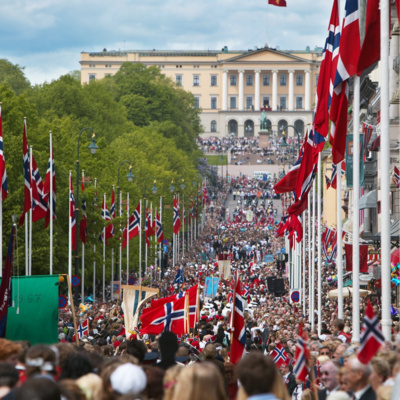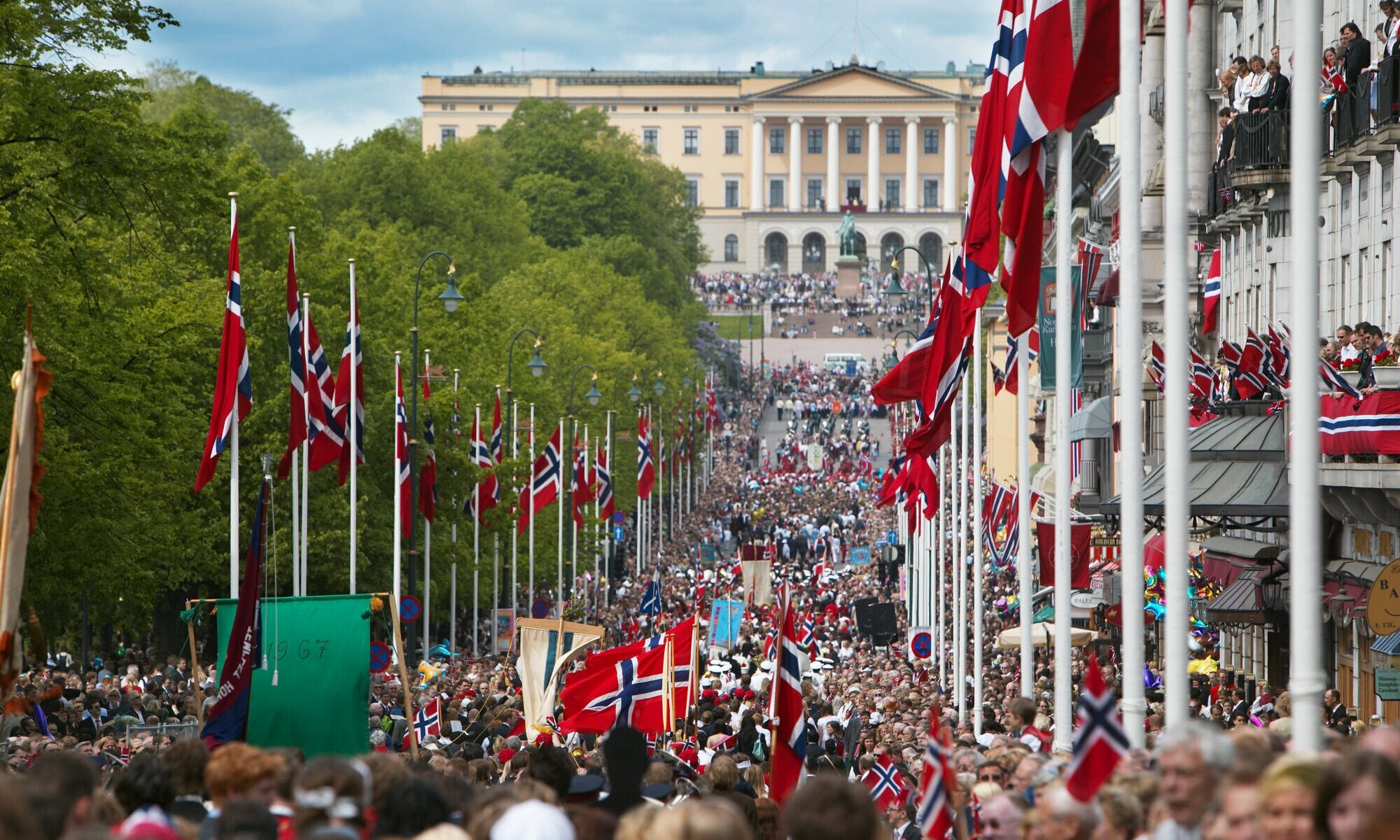03 april 2023 | 13 minutt

Norsk for Beginners is a podcast aimed at beginners of Norwegian (A1-A2). The episodes are structured in two parts: One Norwegian speaking part and the second in English, explaining the Norwegian part and examining some Norwegian vocabulary used in the episode. I speak Norwegian in a clear, slow and deliberate manner, perfect for beginners. Get some listening practice by listening to “Norsk for Beginners”!
Learn Norwegian with professional teacher at Norwegian Community: https://learn.norwegiancommunity.com/link/rNSsCh
Norwegian Community B1 level: https://learn.norwegiancommunity.com/link/rNSsCh?url=https%3A%2F%2Flearn.norwegiancommunity.com%2Fcourse%3Fcourseid%3Db1-komplett-kurs
Norwegian courses: https://skapago.teachable.com/?affcode=26285_sxv09qeu
Email: Laernorsknaa@gmail.com
Transcript: https://laernorsknaa.com/6-9-constutition-day-may-17/
Support me here –>
Patreon: https://www.patreon.com/laernorsknaa
Donasjon (Paypal): Doner (paypal.com)
For more content to learn Norwegian –>
YouTube: https://www.youtube.com/channel/UCxdRJ5lW2QlUNRfff-ZoE-A
In Norway, we celebrate our Constitution Day on the 17th of May, and in Norwegian, it’s often only referred to as the 17th of may (17. mai). We celebrate our Constitution and our independence from 1814. This actually makes the Norwegian Constitution the second oldest in the world to still be in use, just behind the US Constitution. Also, the Norwegian constitution might have been the most democratic in the world when it was made in 1814. Therefore, May 17 is also a celebration of democracy in general.
In addition to the constitution, we celebrate our independence this day. Until 1814, Norway was in a personal union with Denmark and had been so from the 15th century. This happened largely due to the Napoleonic Wars in Europe. Denmark was on the side of the French whereas the Swedes supported the coalition led by Great Britain and Russia. When France lost the war, the victors agreed to transfer Norway from Denmark to Sweden. This was very unpopular in Norway and independence was declared and a constitution made.

Transcripción
Heihei! In this episode, we will talk about the national day of Norway, our constitution day, the 17th of May, or 17. mai in Norwegian. Before we start: Are you interested in learning Norwegian by speaking with professional teachers? Then, you can try taking a Norwegian course with Norwegian Community. They offer lessons for all levels, from absolute beginner to upper intermediate. If you are interested, you can find links in the description.
Learn Norwegian with professional teacher at Norwegian Community: https://learn.norwegiancommunity.com/link/rNSsCh
Norwegian Community B1 level: https://learn.norwegiancommunity.com/link/rNSsCh?url=https%3A%2F%2Flearn.norwegiancommunity.com%2Fcourse%3Fcourseid%3Db1-komplett-kurs
17. mai
Nasjonaldagen til Norge feires den 17. mai. Vi kaller det derfor bare for 17. mai på norsk. På 17. mai feirer vi både grunnloven vår og vår selvstendighet fra Danmark. I denne episoden skal vi snakke litt om historien om hvorfor vi feirer akkurat den 17. mai og litt om hvordan vi feirer denne dagen i Norge.
Vi feirer nasjonaldagen vår for å huske hva som skjedde i Norge for over 200 år siden. Den 17. mai i 1814 laga nemlig Norge sin egen grunnlov. Dette er den samme grunnloven som vi fortsatt bruker i Norge i dag. Den norske grunnloven er faktisk den nest eldste i verden som fortsatt brukes. Det er bare den amerikanske grunnloven som er eldre enn den norske grunnloven. Den norske grunnloven fra 1814 er faktisk begynnelsen på demokratiet i Norge. Da den norske grunnloven kom i 1814, var det kanskje den mest demokratiske grunnloven i verden. Den 17. mai feirer vi derfor også demokratiet vårt.
I tillegg til grunnloven, feirer vi selvstendigheten vår fra 1814. Norge var nemlig i en union med Danmark på denne tida. Norge blei styrt fra Danmark siden 1400-tallet. I 1814 blei endelig landet selvstendig. Det skjedde ettersom Danmark var alliert med Frankrike i Napoleonskrigene. Da Frankrike tapte krigen mot Russland, blei det bestemt at Norge skulle overføres fra Danmark til Sverige. Storbritannia, Russland og de andre landene som var mot Frankrike bestemte altså at Norge skulle gå fra å være en del av Danmark til å bli en del av Sverige. Det ønska vi ikke i Norge. Norges selvstendighet var derfor et resultat av stormaktspolitikk ettersom vi ikke ønska å bli en del av Sverige.
Hvordan feirer vi 17. mai i dag? Vel, 17. mai blir ofte også kalla for barnas dag. Dette er ikke en dag for militære parader. Det er en dag for barneparader. Barn går i tog, synger sanger og vifter med flaggene sine. Alle er ute i gata med flagg. Mange tar også på seg bunadene sine. Bunaden er det tradisjonelle klesplagget i Norge. Både damer og menn kan bruke bunad, men i dag er det vanligere at damer og jenter har bunad.
I tillegg til å gå i tog, eller parader, er det også vanlig å samle seg for å leke, spille spill og spise sammen. Det er vanlig å spise lapskaus, en slags stuing med grønnsaker, potet og kjøtt, og pølser. Noen spiser også rømmegrøt, en slags grøt, på 17. mai. Vi synger også sammen. Sangene handler om hvor mye vi elsker Norge, demokratiet og at dette er en dag for barna. Vi synger også nasjonaldagen, selvsagt.
Vi feirer demokratiet, naturen og friheten. Det er også vanlig at man har en tale, en 17. mai tale. Denne talen handler om akkurat disse verdiene: Demokratiet, Norge og historien vår. Men det handler også om at vi må tenke på andre steder i verden som ikke er like heldige som oss: der det er krig, sult, nød og diktatur. Vi må altså sette pris på det vi har og beskytte våre grunnverdier: demokratiet.
May 17, the Constitution Day
In Norway, we celebrate our Constitution Day on the 17th of May, and in Norwegian, it’s often only referred to as the 17th of may (17. mai). We celebrate our Constitution and our independence from 1814. This actually makes the Norwegian Constitution the second oldest in the world to still be in use, just behind the US Constitution. Also, the Norwegian constitution might have been the most democratic in the world when it was made in 1814. Therefore, May 17 is also a celebration of democracy in general.
In addition to the constitution, we celebrate our independence this day. Until 1814, Norway was in a personal union with Denmark and had been so from the 15th century. This happened largely due to the Napoleonic Wars in Europe. Denmark was on the side of the French whereas the Swedes supported the coalition led by Great Britain and Russia. When France lost the war, the victors agreed to transfer Norway from Denmark to Sweden. This was very unpopular in Norway and independence was declared and a constitution made.
How do we celebrate the 17th? Well, this is often called the day of the children. This is not a day of military parades, but rather parades of children. Children will go in possessions, singing songs and waving their flags. Many people will don their bunads, the traditional clothes of Norway. In addition to the parades, we play games and eat together. Normal dishes are the traditional Norwegian stew lapskaus and hot dogs. Many also eat traditional Norwegian porridge. We also sing together about how much we love Norway and democracy; and of course, the national anthem.
May 17 is a day to celebrate our nature, our democracy and our independence. And all these values should be stressed in the traditional May 17 Speech held all around the country. The speech should mention our democracy and our history, but it should also mention the world around us, especially those less fortunate than us: people that live in war, in dictatorships and in poverty. To appreciate and protect what we have, it is important to reflect on how fortunate we really are.
Vocabulary:
Å feire – To celebrate
Grunnloven – The constitution
Nest eldste – Second oldest
Selvstendighet – Independence
Krig – War
Bunad – The national clothes of Norway
Å overføre – To transfer
Lapskaus – Thick Norwegian stew made of meat, potatoes and vegetables
Stuing – Stew
Grøt – Porridge
Verdi – Value
Heldig – Lucky/fortunate
Sult – Famine
Nød – To be in distress
Grunnverdi – Core values
